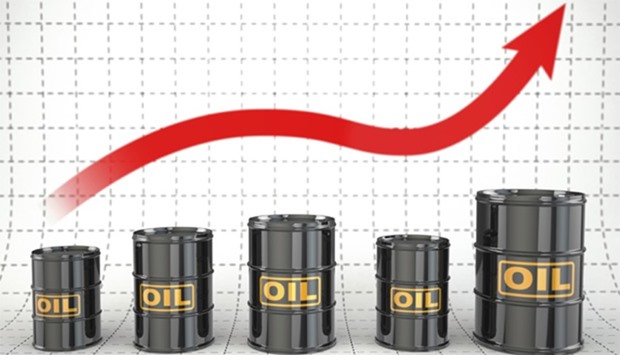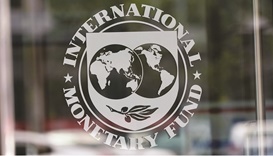هوكشتاين إلى بيروت الثلثاء حاملاً «مقاربة» تعيد إحياء مفاوضات الترسيم… لبنان ينتظر «الاقتراحات»

-02-2022 – موريس متى
يصل الى بيروت الثلثاء المقبل المنسق الاميركي لشؤون الطاقة الدولية والوسيط في موضوع #ترسيم الحدود البحرية الجنوبية آموس هوكشتاين آتيا من تل أبيب وفي جعبته تصور لكيفية إعادة إحياء المفاوضات غير المباشرة بين لبنان وإسرائيل لترسيم الحدود، فيما تشير المعلومات الى إمكان ان يحمل هوكشتاين للجانب اللبناني ردا رسميا إسرائيليا على الشروط اللبنانية التي تعيد الوفد اللبناني الى طاولة المفاوضات.
تتعدد الروايات والتحليلات لما قد يحمله المفاوض الاميركي معه الى بيروت، في حين تشير المعلومات الى امكان ان يقترح الابقاء على الخط 23 وإسقاط الخط 29 والتأكيد على حق لبنان بمساحة الـ 860 كلم2 المتنازع عليها، شرط التأكيد على ملكية إسرائيل لحقل «كاريش» على ان يكون حقل «قانا» من حصة لبنان. ولكن، في حال صدقت هذه التوقعات، نكون قد انتقلنا من حل «علمي» لترسيم الحدود الى حل «سياسي» يسقط الخطوط المقترحة لكون جزء من حقل «قانا»، الذي تقدّر احتياطاته بمليارات الدولارات، وقد يصل حجم ثرواته إلى ضعفَي حقل «كاريش»، وثلثا هذا الحقل موجودان في البلوك الرقم 9 اللبناني، أما الثلث المتبقي فموجود مباشرة تحت الخط 23. وحتى مع اعتماد الخط 23 والابقاء على مساحة الـ 860 كلم2 لمصلحة لبنان، فان أي حل لا يحفظ كل حقل «قانا» لمصلحة لبنان لن ترضى به بيروت. ويبدو ان الجانب الاسرائيلي هو الاكثر «إستعجالا» للإنتهاء من ملف ترسيم الحدود البحرية مع لبنان، حيث تترقب إسرائيل وصول باخرة التنقيب في آذار المقبل لبدء العمل في حقول «تانين» و»كاريش نورث» و»كاريش ساوث»، مع الاشارة الى ان كل حقل «كاريش نورث» يقع ضمن المنطقة المتنازع عليها مع لبنان، في حين ان ما بين 5% الى 10% من حقل «كاريش ساوث» يقع ضمن المنطقة المتنازع عليها. وفي أحدث التطورات المتعلقة بسعي إسرائيل للإسراع في بدء العمل على هذه الحقول، وبعد أيام من اعلان وزير الطاقة الإسرائيلي تمنياته باستئناف المفاوضات الحدودية مع لبنان بوساطة أميركية قريبا، توقّع شركة «إنرجين» اليونانية التي تعمل على حقول غاز «كاريش» و»كاريش الشمالي» و»تانين» قبالة السواحل الاسرائيلية، عقد بدء استخراج الغاز من حقل «كاريش» بحلول الربع الثالث من العام الحالي مع استخدام سفينة FPSO التي بنتها شركة Sembcorp Marine في سنغافورة بكلفة مليار دولار، على ان تبحر هذه السفينة نحو الشواطئ الاسرائيلية في الأشهر المقبلة وتحتاج الى 35 يوما للوصول الى النقطة المتفق عليها في البحر، والى 3 اشهر بعد تاريخ الوصول لبدء مهمتها. وفي تشرين الثاني الفائت، أكدت شركة «إنرجين» ان موعد إنتاج الغاز من حقل «كاريش» يبقى في النصف الثاني من العام 2022 بعدما توقعت الشركة في العام 2018 ان تبدأ عملية استخراج الغاز من حقل «كاريش» في الربع الاول من العام 2021، لكن الظروف لم تصبّ في مصلحة تل ابيب لناحية الالتزام بالوقت المحدد نتيجة الخلافات السياسية الداخلية وازمة حكومة رئيس الوزراء الإسرائيلي السابق بنيامين نتنياهو، اضافة الى جائحة كورونا وغيرها.
وفي هذا السياق، أكد الرئيس التنفيذي لشركة «إنرجين» ماتيوس ريغاس ان سفينة FPSO ستكون جاهزة للإبحار نحو المياه الاسرائيلية في نهاية آذار المقبل، على ان تعمل في حقل «كاريش» ولتبدأ عملية استخراج الغاز في الربع الثالث من العام الحالي لتنتقل بعدها الى حقل (NEA/NI) المصري.
الخبير الدولي في شؤون الطاقة رودي بارودي يرحب بأي وساطة من الولايات المتحدة لإعادة إحياء المفاوضات غير المباشرة بين لبنان وإسرائيل، معتبرا انها «بالتأكيد موضع ترحيب كبير إقليميا ودوليا وذلك للمضي قدمًا بشكل تدريجي في التوصل إلى حلول عادلة ومنصفة للنزاع بين إسرائيل ولبنان في شأن مسألة ترسيم الحدود». ويعود بارودي ليذكّر بما ورد في إحدى الدراسات من حيث الاخطاء التي ارتكبها لبنان لناحية إعطاء الإحداثيات البحرية في العام 2010، اضافة الى الاحداثيات البحرية الخاطئة التي أعطتها إسرائيل للأمم المتحدة في العام 2011، إذ تبين أن لبنان بدأ على مسافة 64 مترًا تقريبًا من نقطة الحدود عند نهاية البر(LTP) في حين ان إسرائيل بدأت على مسافة نحو 32 مترًا من الشاطئ عند نقطة رأس الناقورة المتفق عليها، ومن هنا لا يستبعد بارودي ان تجبر أي محكمة دولية أو الأمم المتحدة كلاً من لبنان وإسرائيل على الالتزام بإعادة النظر في هذا الخطأ وتصحيحه في حال لجأ اي من الطرفين الى الادعاء امام إحدى المحاكم الدولية او تقديم شكوى امام الامم المتحدة رفضاً لأي حل قد يُعتبر غير عادل. ومن أوجه التناقض الجوهرية أن النظام العالمي لتحديد المواقع (GPS) لم يكن موجوداً في الفترة ما بين 2010 و2011، أما حاليا ومع خدمات تصوير الأقمار الاصطناعية العالي الجودة، يمكن كلا البلدين إصلاح الاحداثيات البحرية الخاطئة في غضون أيام. وفي دراساته المختلفة في شرق البحر المتوسط، يؤكد بارودي وجود حقل غاز متداخل يقع بالقرب من حقل «ألون – د» الإسرائيلي اي البلوك 72 الذي يمكن أن يمتد إلى المياه الإقليمية اللبنانية، فيما يمكن التعامل مع هذا الحقل مثل أي حقل آخر في العالم من خلال ما يُعرف بـ»اتفاقية التنمية المشتركة». وقد اختارت شركة «توتال» الفرنسية عند تحديد نقطة الحفر في البلوك 9، نقطة تبعد 25 كلم عن حقل «قانا» لعدم الدخول في أي نزاعات قضائية. وفي هذا الإطار يؤكد رودي إمكان ان يبدأ تحالف شركات «توتال – إيني – نوفاتك» بالحفر الاستكشافي الخاص بها على مسافة 10-15 كلم شمال المنطقة المتنازع عليها، كما تفعل في البلدان الأخرى حول العالم وتحديداً ما هو حاصل حاليا في قبرص.
إسرائيل إحتجت في رسالة وجهها في الاسابيع الأخيرة رئيس بعثتها في الأمم المتحدة الى الأمين العام أنطونيو غوتيريس يبدي فيها اعتراض تل ابيب على فتح لبنان دورة تراخيص هي الثانية للتنقيب عن النفط والغاز في المياه البحرية، إذ يعتبر الجانب الاسرائيلي ان دورة التراخيص الثانية تمتد الى «المياه الاسرائيلية»، أي الى مساحة الـ860 كلم مربعا المتنازع عليها بين الجانبين، وجددت بالتالي تمسكها بهذه المساحة ما بين الخط 1 والخط 23. وحذرت تل أبيب شركات التنقيب عن النفط من القيام بأي أعمال استكشاف أو تنقيب لمصلحة لبنان في هذه المنطقة، لتعود الى الواجهة التساؤلات حول تأخر وزارة الخارجية اللبنانية في توجيه كتاب الى الأمانة العامة للأمم المتحدة للإعتراض على الرسالة الاسرائيلية والتأكيد على تمسّك لبنان بالخطّ 29 وبالمفاوضات غير المباشرة لربط النزاع مجددا مع الجانب الاسرائيلي، خصوصا ان لبنان لم يقر بعد تعديل المرسوم 6433، ولكن يبدو انه قرر «المهادنة» في انتظار ما سيحمله المفاوض الاميركي في جعبته الى بيروت.









NEW YORK – One way or another, central banks’ behavior will have to change with the climate. But it should evolve only because climate change will create new constraints and drive new forms of public and private economic activity. Central banks’ primary function should not change, nor should they adopt “green” targets that could undermine the pursuit of their traditional objectives: financial stability and price stability (which in the United States is a dual mandate of price stability and maximum employment).
Climate change will be a defining global issue for decades to come, because we are still a very long way from ushering in a low-carbon, climate-resilient world. Three features of our greenhouse-gas (GHG) emissions will impede the appropriate response. First, the benefits (cheap energy) are enjoyed in the present while the costs (global warming) are incurred in the future. Second, the benefits are “local” (they accrue to the GHG emitter) while the costs are global – a classic externality. Third, the most efficient methods of limiting GHG emissions impose disproportionate burdens on developing countries, while the task of compensating poor countries remains politically fraught.
The most efficient way to address climate-change externalities is through targeted fiscal and regulatory measures. Pigouvian taxes or tradable quotas would create the right incentives for reducing GHG emissions. Carbon taxes, as advocated by William D. Nordhaus of Yale University, must become the global norm (though it is difficult to envisage a global carbon tax working without a significant transfer of wealth from developed to developing countries). Rules and regulations targeting energy use and emissions can complement green taxes and quotas, and public spending can support research and development in the green technologies that we will need.
What does not belong in the mix is a green mandate for central banks. To be sure, legal mandates can change, and central banks have a well-established tradition of exceeding them. The European Central Bank’s financial-stability mandate is secondary to – “without prejudice to” – its price-stability mandate. This did not prevent it from acting decisively and quite effectively during the global financial crisis, the eurozone sovereign debt crisis, and the COVID-19 crisis, even when this meant overriding the price-stability target in 2021 and likely also in 2022. Moreover, Article Three of the Treaty on European Union explicitly provides for “a high level of protection and improvement of the quality of the environment,” so it is easy to see how the ECB’s financial-stability and monetary instruments could be used to target climate change.
But that does not mean they should be used in this fashion. The standard monetary-policy instruments (one or more policy interest rates, the size and composition of the central bank’s balance sheet, forward guidance, and yield curve control) are typically used to target price stability or the dual mandate. Judging by the results, there is no spare capacity in the monetary-policy arsenal.
These monetary-policy instruments impact financial stability as well, and not always in desirable ways. In addition, capital and liquidity requirements underpin micro- and macroprudential stability; and central banks can impose additional conditions on the size and composition of regulated entities’ balance sheets. As the lender and market maker of last resort, the central bank can choose its eligible counterparties, the instruments accepted as collateral or bought outright, and the terms and conditions on which it lends or makes outright purchases.
There is no doubt that climate change affects a central bank’s price-stability objective, including through current and anticipated changes in aggregate demand and supply, energy prices, and other channels. Climate change also could significantly alter the transmission of monetary policy, and thus will have to become an integral part of the models that guide central banks in pursuit of their primary objectives.
Green issues also affect financial stability in major ways. Extreme weather events can damage assets held by financial institutions and their counterparties. Climate-mitigation and adaptation efforts can depress the value of assets, potentially leaving many “stranded” or worthless. A central bank’s financial-stability mandate requires it to recognize and respond appropriately to the foreseeable effects that climate change will have on asset valuations and on the liquidity and solvency of all systemically important financial entities and their counterparties in the real economy.
But anticipating and responding appropriately to these risks now and in the future does not mean that higher capital or liquidity requirements should be imposed on “brown” loans, bonds, and other financial instruments. Financial-stability risks and global-warming risks are not perfectly correlated. Moreover, there are no redundant financial-stability policy instruments, and capital and liquidity requirements have a clear comparative advantage in pursuing financial-stability objectives, just as carbon taxes and emissions-trading systems have a clear comparative advantage in pursuing and achieving “green” objectives.
The shocks and disruptions caused by climate change will complicate central banks’ pursuit of their price-stability and financial-stability mandates. The last thing they need is to feel pressure to load additional objectives on their limited instruments. Just as it makes no sense to use carbon taxes or emissions-trading schemes to target financial stability, it makes no sense to use capital and liquidity requirements to address global warming. The appropriate tools to address climate change – fiscal and regulatory – are well-known and technically feasible. What is missing is the foresight, logic, and moral courage to deploy them.